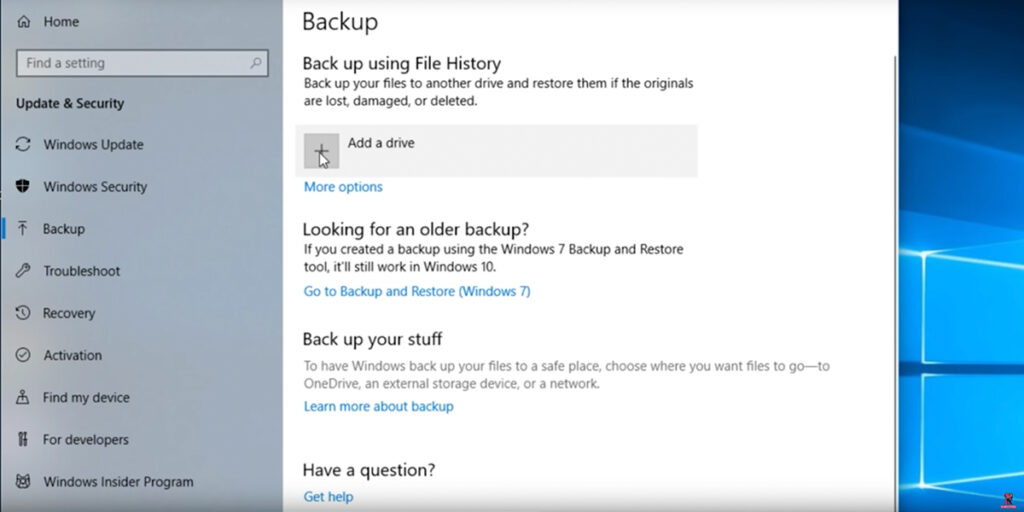Navigating the Digital Repository: A Comprehensive Guide to Storage and Backup in Windows 10

In the digital age, managing storage and maintaining backups are critical aspects of maintaining a healthy and organized computing environment. Windows 10 provides users with a variety of tools and features to manage storage space efficiently and create backups of important data to prevent loss. In this extensive guide, we’ll explore a plethora of strategies, techniques, and tools available in Windows 10 for storage management and backup, empowering users to safeguard their data and optimize storage resources for enhanced productivity and peace of mind.
Understanding Storage Management in Windows 10:
Before delving into storage management strategies, it’s essential to understand the various components and concepts related to storage in Windows 10:
- Storage Devices: Windows 10 supports various storage devices, including internal hard drives, solid-state drives (SSDs), external hard drives, USB flash drives, and network-attached storage (NAS) devices.
- File Systems: NTFS (New Technology File System) is the default file system used by Windows 10, offering advanced features such as file and folder permissions, encryption, and compression. Additionally, Windows 10 also supports exFAT and FAT32 file systems for compatibility with external devices.
- Storage Spaces: Storage Spaces is a feature in Windows 10 that allows users to pool physical storage devices together and create virtual drives with redundancy and resilience. This feature is useful for creating storage pools for data protection and expanding storage capacity.
Strategies for Storage Management:
- Disk Cleanup:
- Disk Cleanup is a built-in utility in Windows 10 that helps users reclaim disk space by removing temporary files, system files, and other unnecessary data.
- To run Disk Cleanup, search for “Disk Cleanup” in the Start menu, select the drive you want to clean up, and follow the on-screen instructions to free up disk space.
- Storage Sense:
- Storage Sense is a feature in Windows 10 that automatically frees up disk space by removing temporary files, old Windows installations, and other unnecessary data.
- To enable Storage Sense, go to Settings > System > Storage, and toggle on the Storage Sense option.
- Storage Settings:
- Windows 10 provides detailed storage settings that allow users to manage storage space efficiently.
- Go to Settings > System > Storage to view storage usage, manage storage settings, and configure storage-related options.
- External Storage Management:
- Utilize external storage devices such as external hard drives, USB flash drives, and network-attached storage (NAS) devices to expand storage capacity and create backups of important data.
- Use File Explorer to manage files and folders on external storage devices, and consider utilizing cloud storage services for offsite backups.
Creating Backups in Windows 10:
- File History:
- File History is a backup feature in Windows 10 that automatically backs up files and folders to an external drive or network location.
- To set up File History, go to Settings > Update & Security > Backup, and select “Add a drive” to choose the backup drive.
- System Image Backup:
- System Image Backup is a feature in Windows 10 that allows users to create a complete backup of the system drive, including the operating system, installed programs, and user data.
- To create a system image backup, go to Control Panel > System and Security > Backup and Restore (Windows 7), and select “Create a system image” from the sidebar.
- OneDrive Backup:
- OneDrive is Microsoft’s cloud storage service that allows users to store and sync files across devices.
- Enable OneDrive backup to automatically sync important files and folders to the cloud for safekeeping and easy access from any device.
Conclusion:
In conclusion, storage management and backup are essential components of maintaining a healthy and organized computing environment in Windows 10. By implementing the strategies and utilizing the tools and features outlined in this guide, users can optimize storage resources, reclaim disk space, and safeguard important data against loss or corruption. Whether you’re managing storage space on your device or creating backups for data protection, Windows 10 provides a range of options to meet your needs and ensure the safety and integrity of your digital assets. So go ahead, explore these storage management and backup strategies, and take control of your digital repository in Windows 10!




